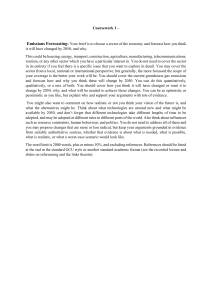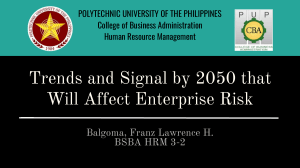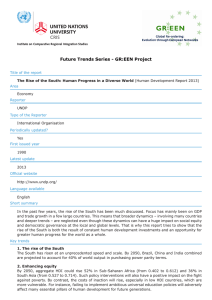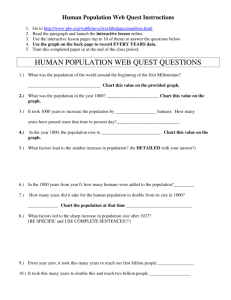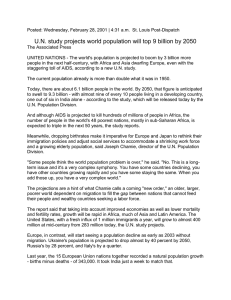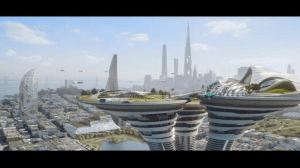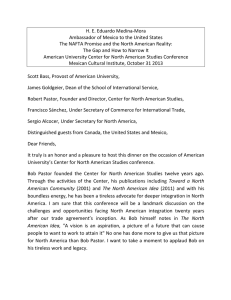Future Trends Series - GR:EEN Project
advertisement
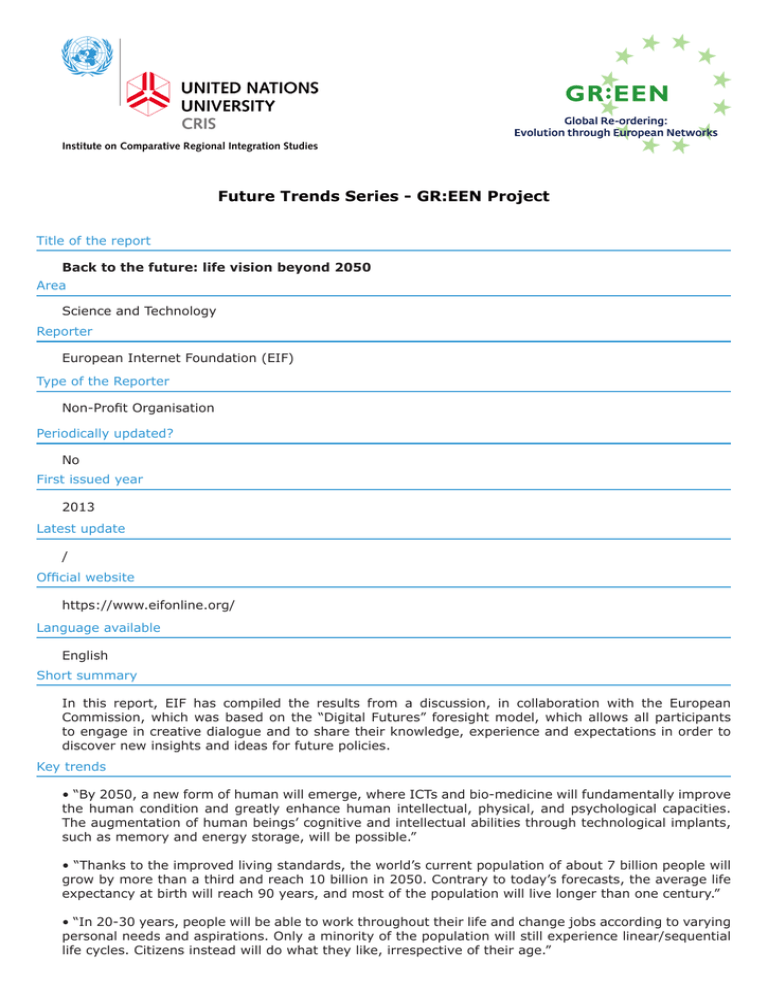
Future Trends Series - GR:EEN Project Title of the report Back to the future: life vision beyond 2050 Area Science and Technology Reporter European Internet Foundation (EIF) Type of the Reporter Non-Profit Organisation Periodically updated? No First issued year 2013 Latest update / Official website https://www.eifonline.org/ Language available English Short summary In this report, EIF has compiled the results from a discussion, in collaboration with the European Commission, which was based on the “Digital Futures” foresight model, which allows all participants to engage in creative dialogue and to share their knowledge, experience and expectations in order to discover new insights and ideas for future policies. Key trends • “By 2050, a new form of human will emerge, where ICTs and bio-medicine will fundamentally improve the human condition and greatly enhance human intellectual, physical, and psychological capacities. The augmentation of human beings’ cognitive and intellectual abilities through technological implants, such as memory and energy storage, will be possible.” • “Thanks to the improved living standards, the world’s current population of about 7 billion people will grow by more than a third and reach 10 billion in 2050. Contrary to today’s forecasts, the average life expectancy at birth will reach 90 years, and most of the population will live longer than one century.” • “In 20-30 years, people will be able to work throughout their life and change jobs according to varying personal needs and aspirations. Only a minority of the population will still experience linear/sequential life cycles. Citizens instead will do what they like, irrespective of their age.” • “The education landscape in 2050 will be characterized by a “blurring of boundaries” between the different levels and directions of education, between higher education and industry. It will provide greater flexibility in designing educational pathways tailored to individual needs, and combining several education modalities into a life-long and stimulating learning experience.” • “The Internet will continue its expansion as global connector, pushed by the advances in underlying technology foundations and by the need to support more sophisticated application scenarios bridging the physical and virtual worlds instantaneously. Its complexity and significance will dramatically increase as we move to the new era of nano sensors and devices, and of virtual spaces and 3D social networks exchanging zillions of bytes of data every month.” • “Social media will replace traditional editorial media as the dominant media arena over the next 20-30 years. Editorial media will continue to exist, but only insofar as they become part of the conversation in the social media arena.” • “The virtualisation of the scientific process and the advent of social networks will allow every scientist to join forces with others in the open global virtual laboratory. Human performance enhancement and embeddable sensors will enable scientists to perceive and observe processes in the real world in new ways. New ICT tools will allow better understanding of the social processes underlying all societal actions. Art practice will gain a whole new status and role in future societies. Creativity will be key to harness the new possibilities offered by science and technology, and by the hyper-connected environments that will surround us, in useful directions.” • “Cities will grow into megacities, which will be highly vascularized by eco-friendly and energysustainable transportation means, and filled with new dwellings and buildings made from innovative construction materials. All elements of the city will be connected to a higher supra-network, the future Internet, on which a whole new service-economy will thrive. Villages will be only seemingly detached from this, as they link themselves into the same web of connectivity, and develop their own specific offerings for work, living, socialising or leisure.” • “In the coming 30-40 years, societies will be characterised by continuous tension between individual and collective interests, leading to a continuous tension between two opposing models: 1) a society where only a few decide for all, either as elected representatives, or because new forms of oligarchic power emerged to exert societal manipulation; 2) a society with neither classes nor hierarchies, characterised by participatory leadership and new forms of “chaordic” organisation, where all have the possibility to co-decide on most if not all issues that matter to them.” Suggestions / Methodology Survey Reference to other trends reports? If yes, which reports? /


